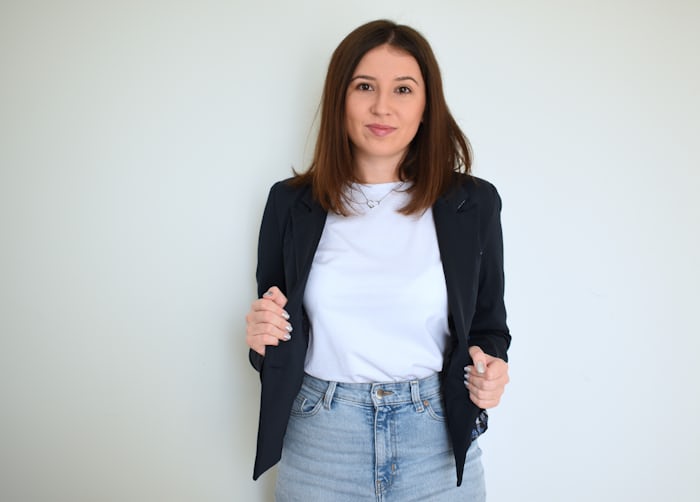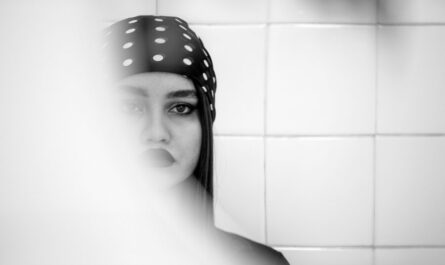In recent years, the body-positive movement has gained significant momentum, reshaping how fashion and media portray bodies, beauty, and self-image. What started as a grassroots initiative to challenge unrealistic beauty standards has blossomed into a global cultural shift. This article explores the rise of the body-positive movement, examining its roots, its impact on fashion and media, and its role in promoting inclusivity and diversity. The movement has become a beacon of self-acceptance, inviting individuals of all shapes, sizes, and backgrounds to embrace their uniqueness and challenge societal pressures.
The Origins of the Body-Positive Movement
The body-positive movement’s origins can be traced back to the feminist movements of the 1960s and 1970s, which critiqued the objectification of women and the limitations imposed by traditional beauty ideals. Early body-positive pioneers, including feminist theorists, activists, and artists, began to question why women were expected to conform to narrowly defined standards of beauty. These early critiques were rooted in challenging the media’s portrayal of women, where thinness was equated with beauty, success, and happiness.
As the movement gained momentum, it became clear that these narrow beauty standards were exclusionary and harmful. The 1990s saw the emergence of more inclusive representations of body diversity, largely driven by a few trailblazing figures in media and fashion. However, it wasn’t until the 2010s that the body-positive movement gained widespread attention and visibility, fueled by social media platforms and the power of online communities.
The rise of platforms like Instagram, YouTube, and Twitter allowed individuals to challenge traditional norms and reclaim the narrative around body image. Influencers, models, and activists began sharing their personal stories, promoting self-love, and celebrating bodies of all shapes and sizes. With these digital platforms acting as megaphones for the movement, the body-positive message spread far and wide.
The Evolution of Beauty Standards
Historically, fashion and media have played a pivotal role in shaping societal views on beauty. From the glamorous Hollywood icons of the 1950s to the rise of supermodels like Naomi Campbell and Cindy Crawford in the 1990s, the media’s portrayal of beauty was often homogenous—focused on youth, thinness, and Eurocentric features. These representations perpetuated a narrow standard of beauty that marginalized those who did not fit the mold.
However, the body-positive movement has had a profound effect on this traditional concept of beauty. In the 2010s, several key figures and events catalyzed the push for body diversity in fashion and media. Models like Ashley Graham and Tess Holliday gained prominence by challenging the conventions of beauty in high fashion, becoming vocal advocates for body acceptance and self-love. Brands such as Aerie, with their “#AerieReal” campaign, made waves by featuring unretouched photos of models with different body types, sizes, and skin tones, which directly challenged the airbrushed perfection that had long dominated advertisements.
Moreover, the concept of beauty began to expand beyond size. While the early body-positive movement was often centered around embracing larger body types, it quickly became clear that body positivity encompasses all forms of diversity. The focus shifted to celebrating people of different shapes, sizes, ages, ethnicities, and abilities, making it clear that beauty comes in many forms.
Body Positivity in Fashion
The fashion industry, which has long been criticized for its exclusionary practices, has been one of the main battlegrounds for the body-positive movement. Traditional runway shows and editorial spreads were overwhelmingly dominated by tall, thin models with specific measurements. However, the increasing push for inclusivity has led to significant changes in how fashion is marketed and represented.
Fashion designers, brands, and retailers are increasingly collaborating with plus-size models and adopting more inclusive sizing ranges. For example, major brands like Gucci, Dolce & Gabbana, and Chanel have begun to feature models of varying body types in their campaigns. While the inclusion of plus-size models on runways is still limited, the growing demand for more diversity in fashion is undeniable. The rise of plus-size fashion lines, such as Torrid, Lane Bryant, and ASOS Curve, has provided women of all sizes with stylish clothing options that allow them to embrace their bodies and express their personal style.
One of the most significant milestones in the fashion industry’s embrace of body positivity occurred in 2016, when Ashley Graham became the first plus-size model to appear on the cover of Sports Illustrated’s swimsuit issue. Her historic cover represented a shift in how the fashion industry viewed beauty and brought attention to the growing demand for body inclusivity. Graham’s success as a model and advocate further cemented the body-positive movement’s influence on the fashion industry.
Moreover, the body-positive movement has sparked the rise of sustainable and ethical fashion practices. As fashion continues to evolve, many body-positive advocates also push for more sustainable and ethical production processes, challenging fast fashion’s harmful environmental and social impacts. By focusing on sustainability, these advocates are not only promoting body diversity but also encouraging a more ethical and responsible fashion industry.
Body Positivity in Media
Beyond fashion, the body-positive movement has also made waves in the broader media landscape, challenging the way bodies are portrayed in television, film, advertising, and social media. Television shows, movies, and advertisements have increasingly featured characters and actors of diverse body types, ethnicities, and backgrounds. For instance, TV shows like Shrill (starring Aidy Bryant) and Plus Sized (featuring larger women navigating daily life) have provided much-needed representation for individuals who were previously underrepresented in mainstream media.
Media moguls and content creators have embraced the body-positive movement by using their platforms to challenge traditional beauty standards. Celebrities like Lizzo, Jameela Jamil, and Mindy Kaling have been outspoken advocates for body diversity and self-love. Lizzo, in particular, has become an iconic figure in the body-positive movement, using her platform to promote self-empowerment and to redefine beauty by showcasing her confidence and unapologetic approach to self-love.
Furthermore, social media platforms like Instagram, YouTube, and TikTok have enabled individuals to share their personal journeys with body acceptance. Hashtags like #BodyPositivity, #SelfLove, and #EffYourBeautyStandards have become rallying cries for individuals seeking to reclaim control over their image and resist harmful societal pressures.
While social media has provided an outlet for body-positive individuals to find support and community, it has also been criticized for enabling some influencers to perpetuate unrealistic standards of beauty in the form of heavily edited and curated content. Nevertheless, many influencers are using their platforms to be more transparent about the realities of their bodies, sharing unfiltered images and encouraging their followers to embrace their natural selves.
The Role of Body Positivity in Mental Health
The body-positive movement has also sparked important conversations around mental health. Body image issues, particularly those related to weight, shape, and size, have long been associated with mental health struggles such as depression, anxiety, and eating disorders. By promoting the idea that all bodies are worthy of love and respect, the body-positive movement has contributed to a wider dialogue about the impact of body shaming on mental well-being.
The pressure to conform to societal beauty standards can have devastating effects on an individual’s self-esteem. In contrast, the body-positive movement encourages individuals to disconnect their self-worth from their appearance, fostering a mindset of self-compassion and acceptance. Body positivity aims to empower people to focus on health—both physical and emotional—rather than chasing unattainable ideals.
In addition, the movement’s inclusivity extends beyond just physical appearance; it also recognizes that individuals of all abilities, races, genders, and sexual orientations deserve to be seen and celebrated. This has helped promote diversity within mental health conversations, giving voice to those who have historically been marginalized or underrepresented in mainstream media and mental health advocacy.
The Future of Body Positivity in Fashion and Media
As the body-positive movement continues to grow, its influence on fashion and media is likely to expand further. The push for inclusivity, diversity, and representation shows no signs of slowing down. In fashion, we may see more brands embracing diverse models, expanding size ranges, and moving away from unrealistic beauty standards. The success of body-positive campaigns and models proves that there is a demand for more inclusivity, and it’s only a matter of time before other brands and designers follow suit.
In the media, the portrayal of diverse bodies in film, television, and advertising will likely become the norm rather than the exception. As audiences continue to call for greater representation, media outlets and advertisers will be forced to adapt to meet these demands. Social media platforms, too, will likely continue to be a driving force in reshaping beauty standards, offering spaces for self-expression, body acceptance, and authenticity.
While challenges remain, the rise of the body-positive movement signals a significant shift in the way we view beauty. By embracing all body types and identities, we can create a more inclusive world where everyone feels empowered to love themselves, regardless of how they look.
Conclusion
The body-positive movement has made tremendous strides in reshaping fashion and media, fostering a more inclusive, diverse, and accepting world. By challenging traditional beauty standards, it has opened doors for individuals of all shapes, sizes, and backgrounds to express themselves authentically. From fashion runways to social media feeds, the movement has created a cultural shift that celebrates individuality, self-love, and acceptance. While there is still work to be done, the body-positive movement has already made a lasting impact, paving the way for a more inclusive future in fashion, media, and beyond. As more people continue to embrace their bodies and challenge unrealistic beauty standards, the future looks bright for a world where every body is celebrated.



